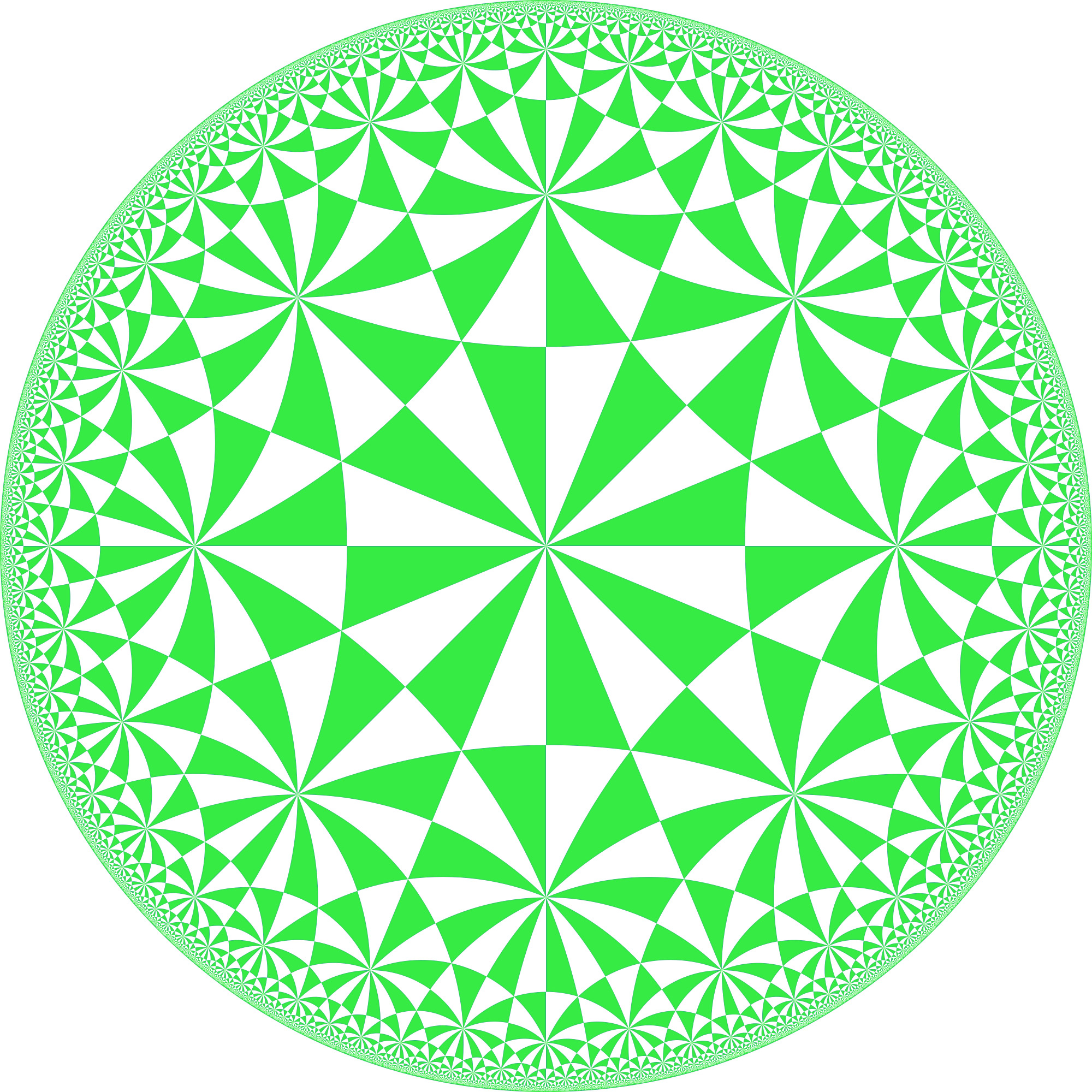Introduction
X-MATH (eXperimental MATHematics) is an online asynchronous symposium showcasing projects organized at Heidelberg and Magdeburg. You can interact with the presenting teams during Feb 20–24 over Slack; register here to receive the Slack invite. This symposium is organized by the Heidelberg Experimental Geometry Lab (HEGL). For questions or comments, please contact hegl [at] mathi [dot] uni [dash] heidelberg [dot] de.
Presentations
Magdeburg
RISE Project: Programming a Geometric Realization of non-affine Coxeter groups
Slack: #wise22-rise-project
Team: Marco Lotz, Mireia Taus
Abstract: This video presents the project Mireia Taus and I implemented as part of a 2020 DAAD-funded internship. Using the python packages “hyperbolic” and “drawSvg” we visualized two-dimensional Coxeter complexes of non-affine Coxeter groups in the Poincaré disk model and coloured the complex according to the reflection length of the chambers.
Heidelberg
Physics-Based Graph Layout in Hyperbolic Space
Slack: #wise22-graph-layout
Team: David Li, Anna Roth
Abstract: In Euclidean space, a physics simulation has been successfully used to find graph layouts that show the symmetries of a given graph without being explicitly specified. In this project, we developed an analogous simulation on the Poincare disc for visualizing some graphs with hyperbolic symmetries.
Rolling Knots
Slack: #wise22-rolling-knots
Team: Leon-Josip Dzojic, Matilde Sciortino, Pirmin Kupffer
Abstract: In 1980, M. H. Freedman conjectured that every generic smooth knot in 3-dimensional Euclidean space has a tritangent plane, i.e., a plane tangent to three distinct points. However, ten years later, A. M. Amilibia, J. J. N. Ballesteros, and H. R. Morton used trefoil knots to construct a family of counterexamples to this conjecture. A. Eget, S. K. Lucas, and L. Taalman later improved the roll-ability of Morton’s family of trefoil knots by reducing the center of mass’s height deviation. In this project our goal was to understand the proof by Morton, find new families of tritangentless knots and optimize them with respect to smooth roll-ability.
Geometric Deep Learning
Coming soon!
Math and Data Science for Social Good
Coming soon!
Political Geometry
Slack: #wise22-political-geometry
Team: Ayşegül Peközsoy, Leonard Späth, Klaus Stier
Abstract: In this project, we analyzed the cross-party cooperation between US senators from 1973-2022 using co-sponsorship data. Our results show significant changes in cross-party cooperation over time.
Continuous Cellular Automata
Slack: #wise22-cellular-automata
Team: Adrian Becker
Abstract: Lenia is a family of cellular automata that generalize Conway’s game of life to a continuous domain. In this project, we implemented two Lenia systems and optimized our implementations with mathematics and GPU programming tricks.
An Interactive Web-Based Animation Application for Graph Algorithms
Slack: #wise22-alvis
Team: Tillmann Fehrenbach
Abstract: In this project, we built an interactive system, ALVIS, for visualizing graph algorithms in the web browser. We here give an overview of the project and the web technologies used.
Hyperbolic Billiards
Slack: #wise22-hyperbolic-billiards
Speaker: Jannis Heising
Abstract: In this project, we study billiard orbits in hyperbolic polygons. Using symbolic dynamics, we visualize tiles in a parameter space corresponding to triangles with particular closed orbits. We are currently refining our method for describing these orbit tiles and exploring relations with billiards in Euclidean triangles.
Root Systems and their Weyl Groups
Coming soon!
Quasicrystals and the Cut-and-Project Method
Slack: #wise22-quasicrystals
Team: Noah Koopman, Ingmar Lowack
Abstract: In 1981, N. G. de Bruijn introduced a novel method for generating Penrose tilings by projecting particular points from a five-dimensional lattice onto the two-dimensional plane. Since then, it has been discovered that the de Bruijn method, now commonly known as the cut-and-project method, can be used to generate many families of aperiodic tilings. In this project, we implement and optimize the cut-and-project method for some families of aperiodic tilings.
Visualizing Poncelet’s Porism
Slack: #wise22-poncelet-porism
Team: Adrian Becker, Miriam Compton, Lukas Schmidt
Abstract: Poncelet’s porism is a deceptively simple result in geometry that states that whenever a polygon is inscribed in one conic section and circumscribes another, the polygon must be part of an infinite family of polygons that are all inscribed in and circumscribe the same two conics. [Wikipedia] In this project, we learned the proof of the result and produced relevant visualizations.
